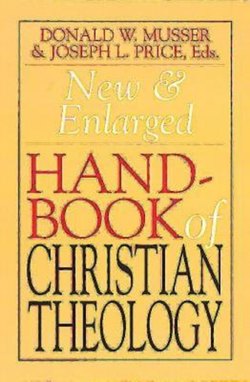Читать книгу New & Enlarged Handbook of Christian Theology - Donald W. Musser - Страница 27
На сайте Литреса книга снята с продажи.
ОглавлениеBAPTISM
Baptism is the chief rite of initiation in Christianity. By the early third century initiation included a five-step process highlighted by baptism: (1) preliminary inquiry, (2) three-year catechumenate, (3) fasting in preparation for baptism (eventually Lent), (4) baptism on Easter, and (5) post-baptismal instruction in the “mysteries” (baptism and eucharist). After Constantine’s conversion in 312, the churches shortened the catechumenate. Major theological emphases included the participation in Christ’s victory over the powers of evil, forgiveness of past sins, spiritual illumination, rebirth and renewal, and the death and resurrection with Christ.
Whether Christian churches baptized infants before 200 is debated. From the third century on, however, baptism of infants became customary in both East and West; Origen and Cyprian regarded it as a tradition of long standing. Against the Donatists Augustine distinguished between validity and efficacy of the rite. Baptism is valid if the proper trinitarian formula is used (as Matt. 28:19), but it is efficacious because of faith. Thence, infants are baptized “in hope,” i.e., that they will believe. During the reformations of the sixteenth century, some radical reformers refused to permit baptism of their children. They insisted that scriptures would not support baptism of infants or small children because they require faith before baptism. Although labeled “Anabaptist,” or “Rebaptizers,” they contended that they really baptized rather then re-baptized since baptism depends on faith.
Catholic and other Protestant reformers reacted to “believers” baptism with much alarm to what they perceived as a grave threat to cherished tradition. Catholic theologians at the Council of Trent viewed baptism as a key item in the system of seven sacraments (baptism, confirmation, eucharist, penance, extreme unction, orders, and matrimony) by which the Church assured the faithful of salvation. It imprints on the soul “a certain spiritual and indelible sign” and may thus not be repeated. Luther contended that infants have faith. “The Formula of Concord” of 1580 (Art. XII.4) ascribed Anabaptist rejection of infant baptism to rejection of the doctrine of original sin. Calvin, by contrast, underscored the covenant derived from Abraham that placed responsibility for faith on parents and on the Church. The Thirty-Nine Articles of the Church of England justified baptism of young children not on theological grounds but “as most agreeable with the institution of Christ” (Art. 27). Subsequently, the Church of England proceeded with some severity against nonconformists and dissenters (including Baptists) who did not worship according to the Book of Common Prayer. Orthodox churches continued the early Christian practice of baptizing infants by threefold immersion in the trinitarian formula.
Baptism remained a sharp point of contention and division among Christians up to very recent times when radical changes in the ecumenical climate, especially with the inauguration of Pope John XXIII (1958–63) and the convening of the Second Vatican Council (1962–65), began to permit more dispassionate discussion. Protestant ecumenism had included consideration of baptism, but the Council opened the way for reexamination of baptism as one of many central issues in Christian unity. Before Vatican II, most Roman Catholic publications on baptism sought to defend their views, but following the Council they sought ways to agree. Free and far-ranging dialogue led to the remarkable ecumenical document on Baptism, Eucharist, and Ministry (BEM) finalized at Lima, Peru in 1982 by the Faith and Order Commission of the World Council of Churches and celebrated at Vancouver in 1983 by the Assembly of the World Council. Between 1985 and 1987 the World Council solicited and received hundreds of “Official Responses” to BEM, including one by the Roman Catholic Church and Orthodox churches.
This widely accepted document describes baptism as being rooted in Jesus’ ministry and a rite signifying the New Covenant between God and God’s people. It emphasized the theological themes of participation in Christ’s death and resurrection; conversion, pardoning, and cleansing; the gift of the Spirit; incorporation into the Body of Christ; and the sign of the Kingdom. Acknowledging a concern of believer-baptists, it asserts that “Personal commitment is necessary for responsible membership in the body of Christ” (III.8) and admits that “While the possibility that infant baptism was also practiced in the apostolic age cannot be excluded, baptism upon personal profession of faith is the most clearly attested pattern in the New Testament documents” (IV.11). Attentive at the same time to pedobaptist concerns, nevertheless, it emphasizes that “Baptism is an unrepeatable act” and that churches should avoid any suggestion of “re-baptism” (IV.13). The document goes on to applaud increasing mutual recognition of baptism. It underlines the symbolic importance of immersion, but also tilts toward the baptismal liturgy used in the third or fourth centuries.
Paralleling the ecumenical progress visible here are steps toward reunion taken by believer-baptist and pedobaptist bodies. The most far reaching are the discussions about unification of nine denominations through the Consultation on Church Union launched in 1962.
E. GLENN HINSON
Bibliography
Baptism, Eucharist and Ministry.
Churches Respond to BEM, ed. Max Thurian, 6 vols.
Dale Moody, Baptism: Foundation for Christian Unity.
Cross-Reference: Ecumenism, Eucharist, Sacraments, Vatican II.
